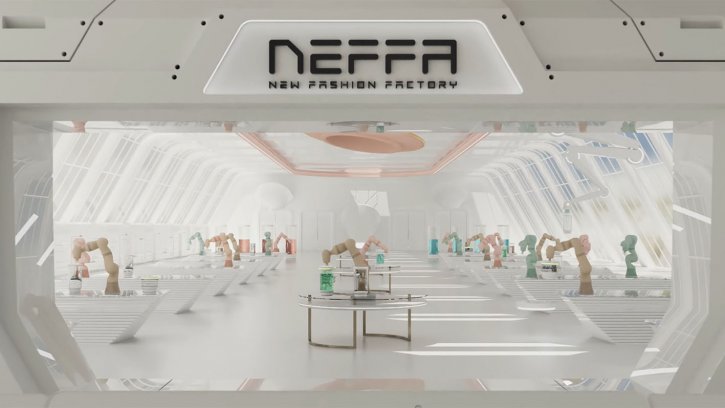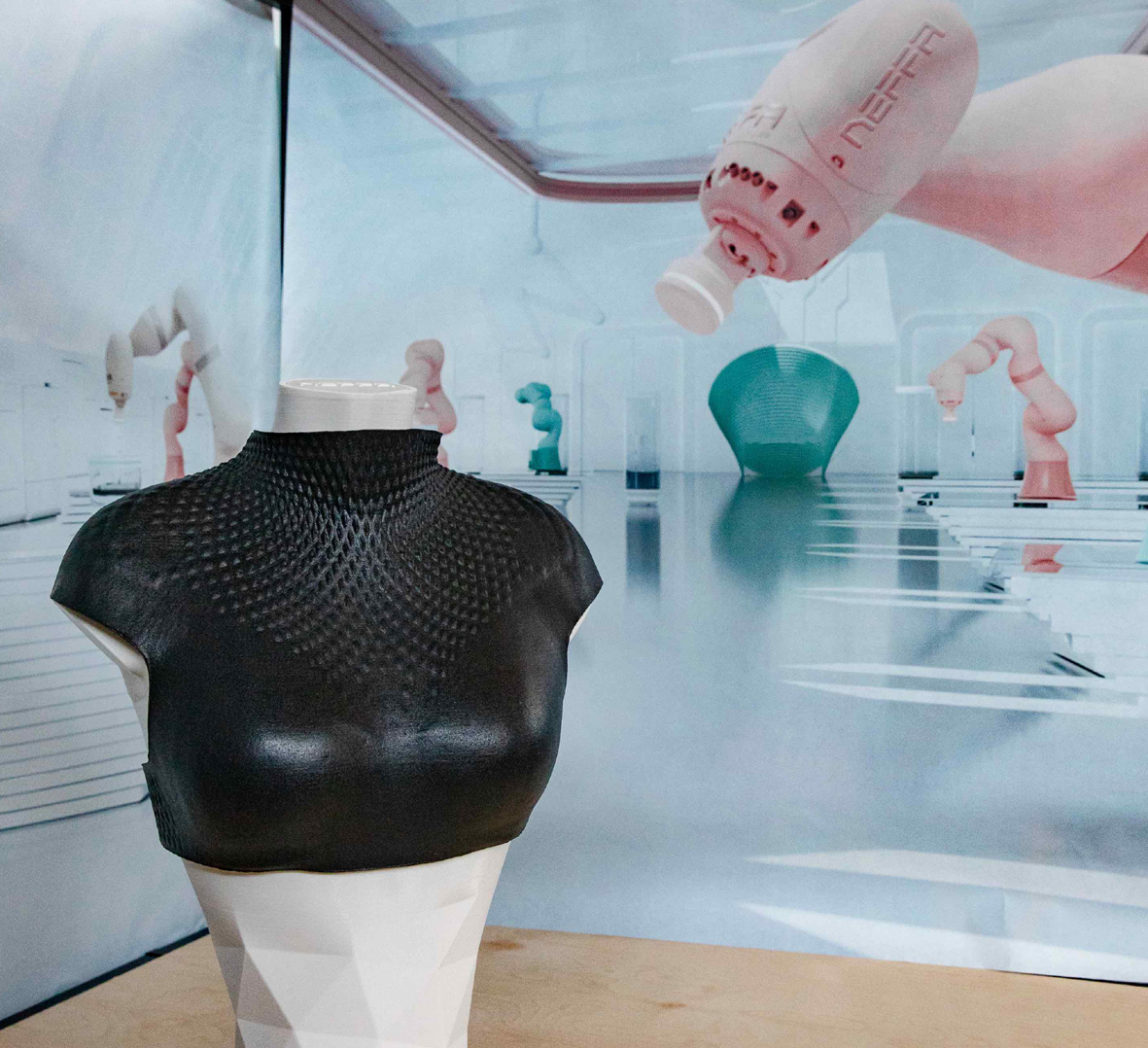crop-300x192-cropped.jpg)
Scientists create stretchable battery made of fabric
NEFFA currently works with mycelium but system can also work with other biomaterials that can be grown through liquid fermentation.

27th June 2022
Innovation in Textiles
|
Netherlands
New Fashion Factory (NEFFA) is ready to showcase how it is bringing biofabricated materials with MycoTEX to market, following pre-launch events during Biofabricate in New York and at the Global Change Award in Stockholm.
NEFFA’s automated manufacturing method makes it possible to produce apparel, footwear and fashion accessories locally and fully in 3D out of biofabricated materials such as mycelium or algae.
Biofabricated materials that are grown through liquid fermentation could make sewing obsolete, and not just that – they also offer new design opportunities that were never possible before
NEFFA’s founders Aniela Hoitink and Nicoline van Enter both have extensive experience in the apparel and footwear industry and over the years they became convinced that the fashion industry does not just have a material problem, but a much wider systemic problem that requires a holistic solution.
“Covid-19 once again emphasised the enormous risk of being dependent on cheap labour countries, yet the way we currently make fashion, is very hard to fully automate, especially sewing operations,” said Hoitink. “Biofabricated materials that are grown through liquid fermentation could make sewing obsolete, and not just that – they also offer new design opportunities that were never possible before.”
Big data and body scans
At NEFFA, design is carried out directly in 3D, using big data or body scans. A digital design interface offers options to apply all kinds of parametric textures in the blink of an eye. The final design is turned into an affordable and recyclable 3D mould with a variety of digital technologies. This is possible because the manufacturing method does not require any high heat or pressure so the moulds can be like blisters.

In the meantime, the biomass is grown in large fermentation tanks. NEFFA currently works with mycelium but its system can also work with other biomaterials that can be grown through liquid fermentation, such as algae or even collagen.
Robots apply the biomass around the moulds, allowing for various material thicknesses throughout a product. As a result, additional reinforcement is not needed, so besides eliminating cutting waste it also minimises the number of separate parts that are needed. The material is then dried and remains flexible, yet firm. It could be compared to moulded leather, although MycoTEX by NEFFA is not intending to make a leather replacement, but rather show how next-gen biomaterials like mycelium can lead to new design opportunities.
The entire process, from growing the material to having the final products, takes only seven days and no plastics or other harmful chemicals are required.
Later this year NEFFA will present its first robotic manufacturing cell together with a well-known German machine building company based on MycoTEX. The cell works with existing robotic systems that are already used in the fashion industry, so companies do not have to invest heavily in new equipment to be able to implement the method.
Watch the New Fashion Factory video...

Business intelligence for the fibre, textiles and apparel industries: technologies, innovations, markets, investments, trade policy, sourcing, strategy...
Find out more